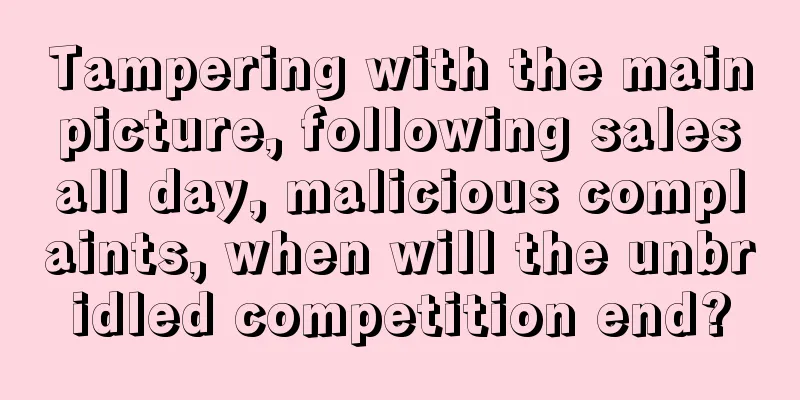|
The recent work experience is really good. It makes me feel like a new person. The work environment is new. I need to meet many new colleagues and no longer need to work alone. It is still a big challenge for one person. Administration, legal affairs, human resources, design, warehouse, I no longer need to handle everything by myself. The rights and responsibilities are clear and I can focus on my job. It's good.
The work content starts from scratch, and the empty cup mentality mentioned above still needs to be accompanied by action.
The product category is also new, and I need to learn a lot of product knowledge, and even extend a lot of certification knowledge and patent knowledge. Learning is a bit annoying but extremely happy thing to do~ That feeling of completion, every cell in my body is clamoring for happiness~
After I had been working for a while, my boss finally issued my first task. He asked me to look at the data of a product and said that they were going to do it themselves (referring to the domestic market).
First of all, this product was completely new to me and I didn’t even know what it looked like before entering the search keywords.
Step 1: Translate existing product keywords to search on Amazon front page and update precise search keywords As expected, Chinese is profound and extensive. The Chinese name is 防**, and the English name is **rescue**. Wonderful~ I almost got led astray. I have heard of cases where people were led astray by the direct translation of Chinese search terms before, but this is the first time I have experienced it myself, and it is quite interesting.
Step 2 Use precise keywords to determine the 1 to N categories in which the product belongs and conduct product research After a round of corrections, you can find a product pool with a higher matching degree. Generally, Amazon veterans know that a keyword usually corresponds to more than one category, so I will elaborate on it here.
Step 3 : Intuitively feel the category capacity and competitiveness This feeling needs to be deliberately trained. For example, when searching, I will look at the volume of keyword search results, the ranking of the top products in the sub-category, the degree of product differentiation, the degree of keyword cliff, the sales concentration of different categories, the overall quality of the listing page, the survival space of new products, etc. After doing these actions for a long time, you will develop something called "professional smell". This series of observations replaced the operation of filling out forms in the early days. Now I even feel that this feeling will get a more accurate intuition than doing data analysis on a complicated form.
Step 4 Product profit analysis Profit analysis is now a priority. Too many products are now operating like a tiger and have earned a shining title, "cross-border philanthropist". First, analyze the gross profit level to avoid falling into a price war. If you find that the gross profit level of the product you are investigating is already very low, run away quickly; secondly, analyze the factors that are likely to lead to a failure to make money in the end, such as the more hidden operating costs, such as return rate and advertising costs.
Step 5 Certification and infringement query This step is also based on the current product category. Generally, this type of product certification is inevitable, just query the certification level required for the corresponding product; there are also patent and appearance queries. There are already many tutorials on this forum. I just learned it today. If you need it, you can cue me to rewrite a new version.
Step 6 Key product analysis Products have a life cycle, and I usually select several representatives of different cycles for analysis: mature products look at the market ceiling, growth products look at the growth path and operation, and budding products look at the difficulty of entry. At the same time, I refer to the growth products as operation templates for my own products. At this time, I will open a table to record the link data in detail, make detailed notes, and continue to track.
Step 7 Negative review analysis I have what others don't, and I am better than others. This is a popular saying in marketing. It is also one of the essences of business. A serious analysis of negative reviews can help you find the future development direction of your products, or at least help you avoid the key factors that lead to negative reviews in product descriptions. Negative review analysis also plays a vital role in later operations, so I won't go into details here.
Step 8 Keyword Research This step can basically set the tone for this survey, and the direction of operation is relatively clear. Whether it is to attack the enemy or to surround the city from the countryside, it may be clear in your mind.
Step 9 Research summary and conclusion Since it is for the boss to see, I have to mark simple summaries everywhere and write a conclusion at the end. After all, the boss is not an operator, and many jargons and terminology are not in sync. Also, the boss is very busy, so just tell him the conclusion.
The above is the idea of my first work report. I hope the big guys passing by can give me some suggestions. I still need to make progress. SeeYA~
"Wonderful Reply" Xiao Jin - "Just an insignificant worker" Agree with: The east wind blew again last night, nimbusyee, Feifeifei's Feifeifei, Santiano, forestvivian more» Is this report for the operations department? It's a bit too detailed to write this in a report for your boss. Are you sure your boss has so much time to read it carefully? (Of course, if your boss is also working in operations, just ignore what I said.)
Then some questions about the report itself:
① Put the summary at the very beginning. For a research report, it is best to explain your intuitive feelings after researching the market/category/product at the very beginning, and then set a tone for the report. The subsequent sections can then gradually supplement and explain this tone. This way, whether you are giving a quick review to your boss or explaining it to operations in a meeting, it will be smoother.
②Why are there three keyword research modules in a market research report? As for product selection/development, generally speaking, the keyword module only needs to do the most basic analysis. This thing is essentially something that operations need to consider. Product selection/development needs to focus on the product itself.
③Is there no competitor research module? Whether it is a direct competitor or a direct competitor seller, it is best to have a dedicated module for analysis. This is used to help the boss judge the difficulty of eating up the market share of peers after entering the market, which is quite important.
④ It is best to create a portrait of the target group, which can assist in some policies of the sales location or hot trends (short video platforms, popular culture, etc.).
⑤ For the overall operation cycle and cash flow operation, it is best to do some of this if possible to assist the boss in judging the overall investment and capital rollback efficiency.
⑥ A rough structural analysis of the product (including the approximate cost of each structure can also be marked) can be done to assist the boss in judging the room for price negotiation with the supply chain.
⑦ If the sample has been determined, you can add a product competitive advantage analysis.
These are probably all I can think of in a short period of time. If you have different opinions, welcome to discuss. Anonymous user • Ningbo • 2024-04-08 10:02 It is operation itself, not development. The boss's role is more like development. What you said supplemented what I haven't considered yet or I want to consider it in the next stage. The background here is that our company's main business is the Chinese online general agent of foreign brands. For this product, I think the threshold is in patents, appearance design and product certification. If he can handle these, my plan will be more practical.
Xiaoban • Xiamen • 2024-04-08 10:12 @Anonymous User Regarding issues such as patents and design patents, I personally prefer to seek evaluation from a professional organization after I have decided to enter the track.
Let’s not talk about invention and utility model patents for now. The protection scope and circumvention methods of appearance patents alone are not something that can be done by ordinary operators who have not studied the relevant laws.
However, in addition to appearance patents, if you encounter problems with appearance designs, you also need to consider copyright registration, which may sometimes be a little more complicated than patents (in terms of difficulty of troubleshooting).
As for product certification, it is actually a relatively simple thing. A qualified developer always has the means to obtain the required product certification (but you are an operator...).
Zhang Heng • Shantou • 2024-04-08 10:39 How to create this crowd portrait? We often hear this term: Who buys? Who uses? Who gives feedback? In what scenario? What problems do you want to solve and what feedback do you give?
Anonymous user • Ningbo • 2024-04-08 10:54 @小禁: I have learned a little bit about the scope of protection of appearance patents. Now I can roughly judge the degree of infringement based on the patent line drawings and the actual products. As for certification, our product is still a bit complicated. I am still continuing to learn. FDA 510K has different requirements for different products. What is certain at present is that the main competitors basically have patents. There is also one company that has at least modified the private model to counter part of the appearance design. So I personally put the patent in the front. There are also many sellers who are skirting the rules, but I still want to do it formally. Black hat knows but dare not
Xiaoban • Xiamen • 2024-04-08 10:55 @张heng: There are no formulaic steps to create a crowd portrait, and there are many ways to obtain information.
The simplest one is related to the policies/news/popular trends I mentioned above. Through this information, you can intuitively feel the status of the product in the local ecological position, and then analyze the core needs, pain points and itch points of the corresponding population of the product.
After dealing with all of the above, it’s a matter of personal resources. For example, if I’m mainly working on the US site, and I have the contact information of many international student groups, I will go directly to them to confirm whether my idea is correct (if it’s not the corresponding user group, I can ask them to help find the corresponding group to confirm, but I may need to give them some tips).
The essence of crowd profiling is to understand needs. This can be deep or shallow, and there is no specific quantifiable standard. Many times, it is a point that is considered for product optimization/customization.
Xiaoban • Xiamen • 2024-04-08 11:09 @Anonymous User I remember 510k is related to medical devices, right? The qualification requirements are indeed high, and there is really no way to circumvent it. It depends on whether the cooperating factory can provide support.
I still prefer to let the service provider handle the patent issue, mainly because it is too easy to be blamed if I handle it myself, and there is no need to save money for the boss in this area.
Anonymous user • Ningbo • 2024-04-08 11:20 @小禁: Yeah, I understand. You can choose products within the health range. I am currently studying the classification of these products. Your suggestions are very pertinent. I really need to learn some skills to avoid being blamed. For example, I recently bought a domain name when I was registering a trademark, and I paid for it myself, hahaha
Flowers bloom and fall, filling the sky - just do what makes you happy Agree with: Little Guo Xiashi, YC7777, Eat roast chicken today, Ten years to sharpen a sword, Half a day of leisure in life More » My market research habits are as follows
Market size, annual market growth rate (usually 3-5 years per cycle)
Market monopoly (products with the majority of orders concentrated in the top are not considered for entry, as they cost too much and are easily given away for free)
Average price of competing products in the market and appearance patents and other patents (use your own products as a reference to calculate the profit situation, and use patents to check whether your products can enter the market)
Whether the profit meets the target, if it is lower than 20-25%, please consider carefully (profit margin determines operating space)
CPC bidding (if the bid is too high and personal funds are limited, I will also carefully consider whether to enter the market)
Product advantage analysis (check the negative reviews of competing products to see if your product can solve these pain points)
Price advantage (being a few dollars cheaper than others is not an advantage; this depends on the optimization of each supply chain and iterative product functions)
Time length, how long it will take to get your money back, how much loss this product can accept, how much initial investment is needed
The last part is the promotion plan, the arrangement of advertisements, the target number of orders to be achieved, whether the product positioning is to increase sales or to make profits at the beginning, etc.
Anonymous user • Ningbo • 2024-04-08 10:50 What I am lacking at the moment are 8 and 9. Because my previous experience was to push forward step by step without making a plan. Later, I started my own business without thinking clearly. 8 and 9 made me feel a bit upset. If it is convenient, can you share the detailed analysis of 8 and 9? Thank you
Flowers bloom and fall, filling the sky • Shenzhen • 2024-04-08 11:14 8.1. First check when is the peak season for this product, plan the delivery time, estimate 3-6 months as a cycle, how much is invested each month in the early stage (production cost, first leg, commission), advertising fees, other miscellaneous expenses, etc., calculate the monthly situation in the profit and loss statement, and count for 3-6 months, then you will have a rough idea of how much money is needed to invest in this product
9.1. There are many changes in the promotion plan. For example, my plan is to have 300 orders in April, with an advertising fee of $3,000 in April, and 600 orders in May, with an advertising fee of $6,000 in May. If I fail to complete the plan, how should I adjust it? Will it deviate from the overall promotion plan? The product positioning is determined at the beginning. For example, I currently have 3 similar products, which are different in appearance and function. A is a rush model, and BC are all profit models.
Invincible Xiaomai • Zhengzhou • 2024-04-09 18:00 I have two questions for you. 1. How do you measure the market size? Is it the total orders of all products in the niche market, or the total number of searches for the core keywords of the product? 2. How do you calculate CPC? Is it from SellerSprite, or by entering the words in the ad backend? I feel like neither of these two methods is accurate.
Flowers bloom and fall, filling the sky • Shenzhen • 2024-04-12 15:28 @无敌小小米: 1- Market volume I download products in the TOP100 through Seller Elf, which is the total number of orders for similar products in the market. 2- How to calculate cpc depends on the situation. I use the price in the backend as a reference, and then enter a reference price cpc myself. As I said, it depends on whether your positioning is for impulse or profit. If it is for impulse, the cpc fee will definitely be much higher. If it is for profit, the cpc will even be lower than the reference price.
The light of hope for the post-90s -After five years in the industry, I am indifferent to the ups and downs Let me share my thoughts:
Check the market branches and the product characteristics of similar products in the category to determine the product positioning;
Go down to the category you want to work on, look at the size of the category, and determine whether there is a monopoly in the category;
Determine whether the product price is suitable for entry. Sometimes, a product price that is too high is not suitable for entry.
Check the product features of major competitors and analyze their pros and cons;
Confirm whether there are any patent issues
Research accurate keywords and start looking at the search terms (for business purposes)
Wearing a vest to beg for food "For mature products, look at the market ceiling; for growth products, look at the growth path and operational operations; for budding products, look at the difficulty of entry. At the same time, refer to the growth products as an operational model for your own products."
How do you look at and analyze "market ceiling" and "entry difficulty"? Do you look at the star rating of reviews or Anonymous user • Ningbo • 2024-04-09 13:45 The market ceiling is mainly determined by the BSR ranking of major categories. If it is in the top 100 of a major category, the overall market capacity is considerable, but the competition will also be fierce. The difficulty of entry is generally determined by the proportion of new products, the average monthly sales of new products, and whether the new products have been attacked by malicious negative reviews from competitors during the period of new products.
Anonymous user There is one good point. I think keywords are actually a must for product research. First of all, understanding the advertising proportion of a link is very important for you to understand this category. Some products have a high order volume, but upon closer inspection, all the orders are from advertisements. This has a huge impact on profit calculation, and it also has a great impact on order volume estimation.
|










